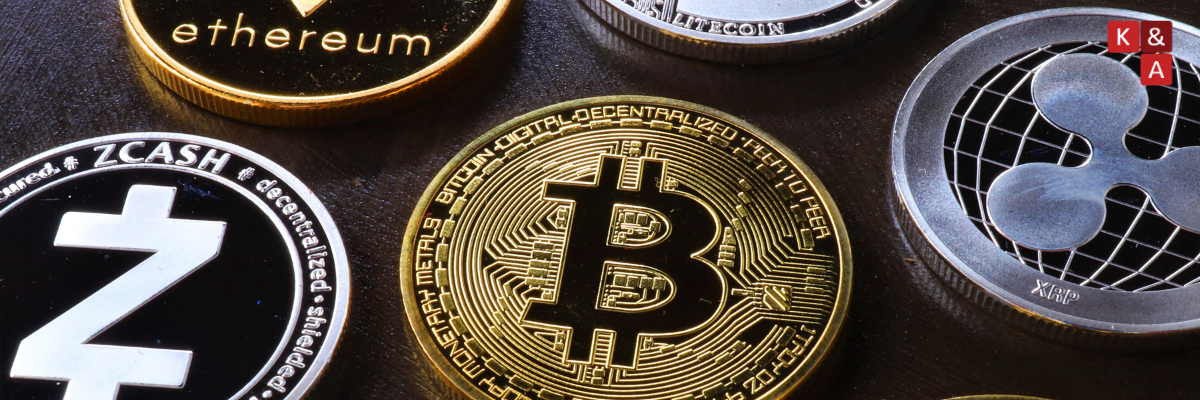By Steven Burke & Taher Kameli
With Bitcoin and Ether falling outside SEC jurisdiction, the Commission ended 2020 by filing suit against Ripple Labs, the company behind XRP, which, at the time, boasted the largest market cap for a cryptocurrency still within the SEC’s reach. To illustrate the unique aspects and allow readers to draw their own conclusions, this blog post will summarize the previous SEC crypto actions that focused on the core allegations present in the case against Ripple.
Notably, between July 1, 2013, and December 31, 2020, the SEC has brought 75 enforcement actions against crypto companies (43 litigations and 32 administrative proceedings) and obtained over $1.77 billion in penalties; however, the action against Ripple would mark the first time a prestigious crypto company with a proven track record went toe-to-toe with the Commission in open court regarding the issue of when cryptocurrency should be considered a security. Specifically, of the 43 litigated cases, the SEC has largely targeted instances of fraud, with just 8 of the 43 cases, including the action against Ripple, being brought without an allegation of fraud. Moreover, only 4 of the 8 “cryptocurrency litigations” actually involved an ICO. For simplicity, we shall hereinafter refer to these each of these four cases as an “ICO Action” and jointly as the “ICO Actions”. While we do find some merit to the SEC’s case against Ripple, we also believe that the Commission was too hasty in proceeding to trial; specifically, we believe that Ripple can and should be distinguished from the other SEC actions involving unregistered but non-fraudulent ICOs. SEC Litigation Involving Unregistered Crypto Offerings Without Allegations of Fraud.
The SEC’s first ICO Action was brought against Kik Interactive Inc. on June 4, 2019. In its complaint, the SEC alleged that Kik had attempted to save its failing business by illegally raising $100 million through the sale of Kin tokens. Notably, in support of the action, the SEC emphasized the fact that Kik marketed the Kin tokens on the premise that it would use the proceeds of the ICO to develop the Kin Ecosystem, which would drive an increase in Kin’s value over time. Additionally, in promoting Kin, Kik declared that it would retain 30% of the Kin supply to align its interests with those of the investors, thus assuring that it would take the proper steps to maximize the value of Kin and allowing “both Kik and early Kin investors to ‘make a ton of money.’” While Kik attempted to side-step the securities regulations with a claim of utility, the use of Kin was limited to unlocking certain emoji-like stickers on the Kik platform relative to the amount of KIN a user held. Understandably, the SEC gave little credence to the assertion. Ultimately, the court determined “[t]he economic reality is that Kik, as it said it would, pooled proceeds from its sales of Kin in an effort to create an infrastructure for Kin, and thus boost the value of the investment” and approved a $5 million dollar civil penalty against Kik for engaging in an unregistered offering of securities.
On September 18, 2019, just a few months after beginning civil litigation with Kik, the SEC initiated its second ICO Action, this time targeting ICOBox. In its complaint, the SEC asserted that ICOBox had raised $14.6 million through the sale of its ICOS token. Summarily, ICOBox told investors that the offering proceeds would be used to cover the costs of facilitating initial coin offerings for digital asset startups. Moreover, ICOBox touted the fact that ICOBox would curate select crypto projects, estimated to exceed 100 offerings a month, and allow investors to swap their ICOS for tokens at a discounted price averaging just 25% of the market rate. Although facilitating just 35 initial token offerings in the two years of operations, the curation of these projects also enabled the SEC to bring claims of unregistered broker activities against ICOBox. Regardless, ICOBox failed to achieve the lofty ambitions forecasted by its promotional materials. Accordingly, shortly after launching its platform, ICOBox was forced to discontinue the ability to swap ICOS for newly issued tokens rendering ICOS tokens useless. Without the ability to swap ICOS for other tokens, ICOS lacked a viable market which precipitated its fall in value to just 5% of the average price initially paid by investors. With all the hallmarks of a classic investment contract, the case surely would have reached a similar outcome, the court ended up granting default judgment for the SEC on all charges and ordered ICOBox to pay over $16.2 million in disgorgement, interest, and civil penalties.
For its last ICO action prior to XRP, the SEC initiated civil proceedings against Telegram on October 11, 2019. In its complaint, the SEC emphasized that having already raised approximately $1.7 million through the sale of 2.9 billion Gram tokens, Telegram was “committed to flood the U.S. capital markets with billions of Gram tokens by October 31, 2019.” Accordingly, the SEC brought an emergency action to enjoin Telegram from continuing to offer Gram tokens without filing a registration statement. Furthermore, in classifying Grams as securities, the SEC explained that Telegram had sold Grams under the understanding that the proceeds would “capitalize its business and finance the creation of its blockchain—the ‘Telegram Open Network’ or ‘TON Blockchain.’” Anticipating Telegram’s claim of utility, the SEC further elaborated the fact that Grams could not be used to purchase any products or services and emphasized the efforts Telegram had taken to create a secondary market for Grams by facilitating sales on various crypto exchanges.
Notably, Telegram acknowledged that the “Gram Purchase Agreements,” which entitled investors to a predetermined number of Grams upon the launch of the TON Blockchain, was an investment contract but argued that the underlying Grams were a form of currency and not a security. In refuting the currency classification, the SEC made the following arguments: (1) the fortunes of Telegram and its investors were tied to one other and dependent on the success of the venture; (2) investors expected to reap enormous profits ones the Gram market and TON ecosystem launched; (3) no actual use existed for Grams at the time of sale; (4) the amount of Grams purchased by investors far exceeded any plausible future use on the TON Blockchain; (5) the inclusion of limited lock-up provisions indicated that most Grams were expected to be immediately resold; and (6) the sale of Grams was intended to finance the development of various Telegram projects and not merely to facilitate the use of Grams on the TON Blockchain. Notably, although ultimately rejecting the argument, the court explored whether Grams could be considered a commodity before determining that the Gram Purchase Agreement and the underlying Grams should be considered two parts of a single transaction and not an investment contract governing the sale of a commodity. Accordingly, with offering materials touting the experience of the Telegram team and who would use the pooled investment proceeds to increase the value of Grams, the court ultimately agreed with the SEC and found that the scheme to sell and distribute Grams constituted an unregistered offer and sale of securities.
Interesting Aspects of SEC’s Complaint Against Ripple.
The SEC’s recent action against Ripple, which was filed in the US District Court for the Southern District of New York on December 12, 2020. Comprised of 404 paragraphs, the SEC’s complaint against Ripple is significantly larger than complaints that kicked off the three ICO Actions discussed above, which had an average length of just 148 paragraphs. While one could assume the additional paragraphs were dedicated to demonstrating an abundance of evidence supporting the SEC’s claims, a closer read of the complaint gives quite the opposite impression. Specifically, where the previous ICO Actions succinctly identified the explicit manner in which the offerings involved an investment of money in a common enterprise with a reasonable expectation of profits to be derived primarily from the efforts of others, the SEC relied on far more strained inferences of tenuous facts to support its claims against Ripple. For example, in arguing that XRP satisfies the Howey Test, the Commission makes over a dozen references to Ripple’s internal communications whereas the prior complaints simply had no need to put forth such tacit “support” for its position.
Notably, the SEC’s case depends on demonstrating how XRP qualifies as an investment contract under the Howey Test, which requires a finding of the following three elements: (1) an investment of money; (2) a common enterprise; and (3) a reasonable expectation of profits to be derived primarily from the efforts of others. Although having little difficulty proving these elements in its earlier ICO Actions, the SEC offers a far less certain explanation for the classification of XRP under Howey. Nonetheless, the SEC has developed a fairly solid formula for portraying cryptocurrency as a security and we do believe that the SEC has likely provided sufficient evidence to support such a finding for XRP. Regardless, whether resolved through a settlement agreement or court decision, the stakes for both sides are monumental and will likely dictate cryptocurrency regulations for the foreseeable future.
A win for Ripple would significantly dampen the SEC’s immaculate enforcement record and provide future crypto projects a road map to escape the dreaded Howey Test; however, a win for the SEC could significantly stifle the crypto industry, by potentially proscribing further sales of XRP and obliterating the market for one of the largest players. The conclusion of this matter will create significant changes throughout the cryptocurrency industry, and with the stage already set, we will be watching carefully to see which way the winds will blow.




